To Create a Visual Field Feature
The following procedure uses an example of creating a visual field for a bus driver looking through the front window.
1. Click > . The Visual Field tab opens.
2. To define the location of the driver’s eyes, make sure the Eye point collector is active, and select a datum point or a coordinate system. This is the vertex of the cone of vision.
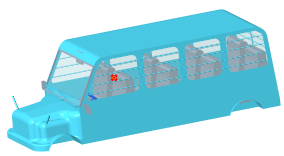
3. To define the outer contour of the cone, click the Look at or through collector, and select a body, a quilt, or a part. This item represents the object to look through, like a window, or to look at, like an instrument panel.
In the example, the front windshield is selected.
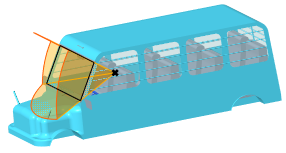
4. Optionally, to identify obstructions within the contour of the cone, click the Obstructing objects collector, and select bodies, quilts, and components (parts or sub-assemblies). These decrease the cross-sectional area of the cone.
In the example, the steering wheel is selected as an obstructing object. Notice the projection of the steering wheel at the bottom of the cone.
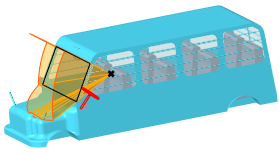
This is the same example viewed from the front.
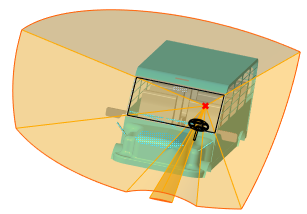
5. Optionally, to exclude objects from being considered obstructions and treat them as if they are not obstructions, click the Excluded objects collector, and select bodies, quilts, or components of a part or sub-assembly.
For example, if the entire bus is selected as an obstructing object, the right and left marker poles are removed from the bottom left and right of the cone.
The steering wheel and windshield wipers are selected as excluded objects. They are treated as if they are not obstructions, and they are not removed from the cone.
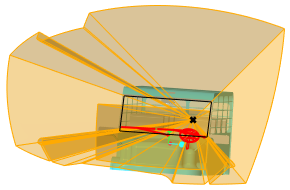
6. To define the view distance between the eye point and the imaginary spherical base of the cone, under View Distance, select one of the following options:
◦  By Value, and then type a distance value.
By Value, and then type a distance value.
 By Value, and then type a distance value.
By Value, and then type a distance value.◦  By Reference, and then select a datum point, vertex, coordinate system, surface, plane, quilt, or body.
By Reference, and then select a datum point, vertex, coordinate system, surface, plane, quilt, or body.
 By Reference, and then select a datum point, vertex, coordinate system, surface, plane, quilt, or body.
By Reference, and then select a datum point, vertex, coordinate system, surface, plane, quilt, or body.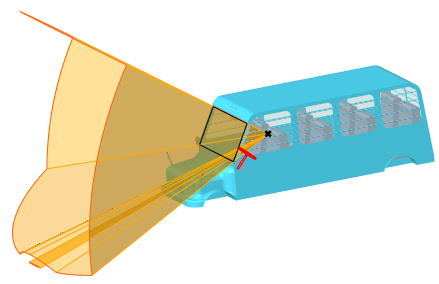
7. Optionally, to add another cone to the Visual Field feature, click the Cones tab, click Add new, and repeat steps 2–6 to define the new cone.
8. Click  OK.
OK.
 OK.
OK.
 Visual Field
Visual Field